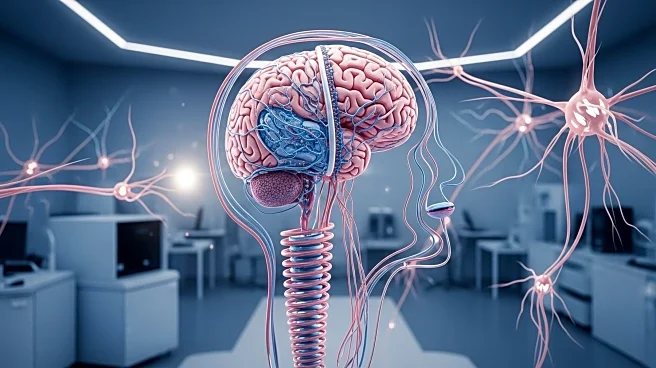What's Happening?
Researchers are developing a new class of biohybrid implants designed to integrate seamlessly with human tissue, potentially revolutionizing treatments for paralysis, hearing loss, and other neurological conditions. These implants, made from flexible materials and living cells, aim to overcome the limitations of traditional rigid devices that often trigger immune responses. The technology includes soft electrode threads and biohybrid implants that grow into tissue, offering long-lasting solutions. Scientists are exploring applications such as restoring movement to paralyzed limbs and enhancing brain function through engineered neuronal microtissues.
Why It's Important?
The development of biohybrid implants represents a significant advancement in medical technology, with the potential to improve the quality of life for individuals with nerve damage and neurological disorders. By integrating living cells with electronics, these implants could offer more durable and effective solutions than current devices, which often require frequent replacement. This innovation could lead to breakthroughs in regenerative medicine, providing new avenues for treating conditions like Parkinson's disease and spinal cord injuries, and potentially enhancing cognitive functions.
What's Next?
Researchers are conducting clinical trials to test the safety and efficacy of these biohybrid implants in humans. The focus is on refining the technology to ensure it can be widely adopted in medical practice. As the field progresses, collaborations between scientists and medical professionals will be crucial in translating these innovations into practical treatments. The long-term goal is to develop implants that not only repair damaged connections but also enhance brain function and restore lost capabilities.
Beyond the Headlines
The ethical implications of biohybrid implants are significant, as they challenge traditional boundaries between biology and technology. The potential to enhance human capabilities raises questions about the future of human augmentation and the societal impact of such advancements. Additionally, the integration of living cells with electronics may lead to new regulatory challenges, requiring careful consideration of safety and long-term effects.














